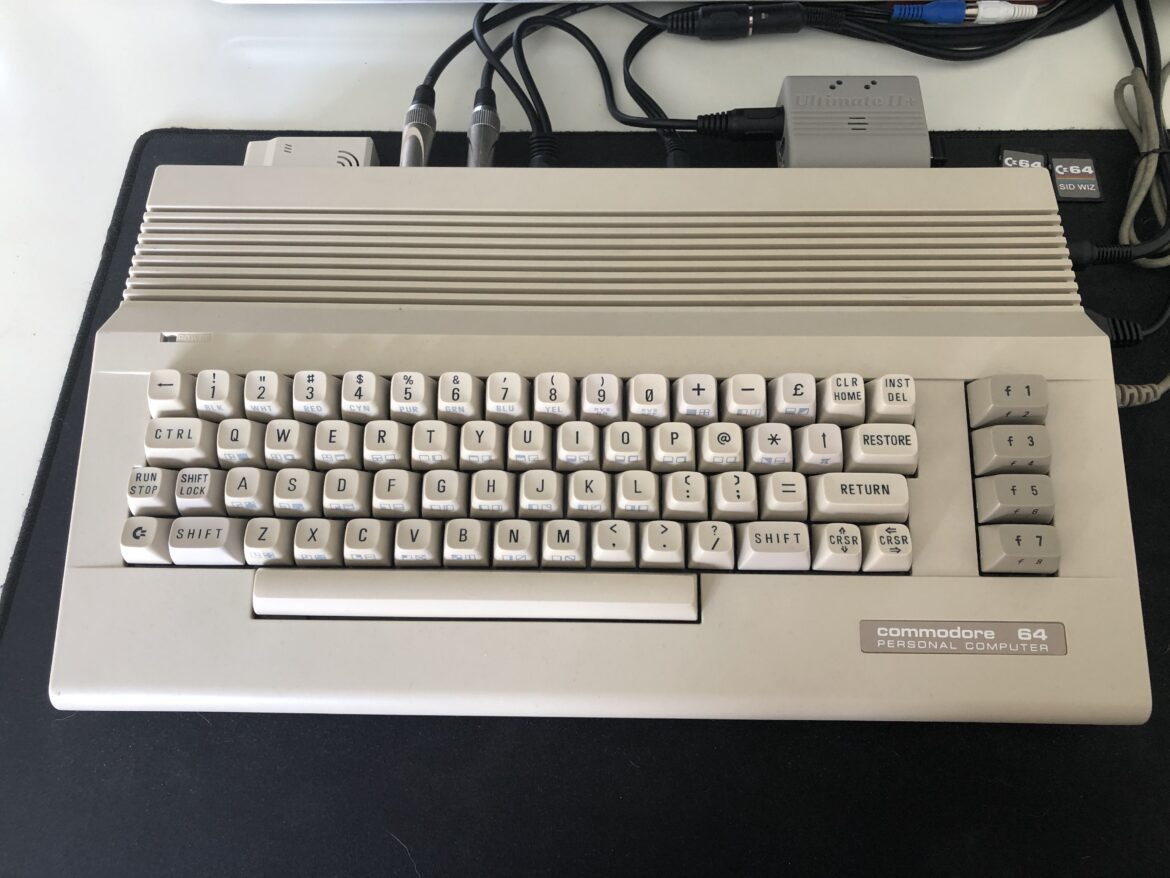Technical Specifications
- CPU: MOS Technology 8500
- Clock Speed: 0.985 MHz
- ROM: 20 KB (9 KB Commodore BASIC 2.0, 7 KB KERNAL, 4 KB Character Generator), JiffyDOS 6.01
- RAM: 64 KB
- Graphics: MOS VIC-II 8565 with c0pperdragon Component Video Mod
- Audio: 2x MOS Technology SID 8580R5 with SidFX board
- Region: PAL
- Internal Storage: SD2IEC
- Keyboard: Old-style with front-printed PETSCII graphics
- PSU: AirDrive C64/1541-II Dual Power Supply EU
Peripherals
- External Storage: Commodore 1541-II Floppy Disk Drive with JiffyDOS 6.01, 1541 Ultimate II+
- Networking: WiFi 64
- Controllers: RetroGameBoyz Retro64 Gamepad, Commodore 1351 Mouse, Commodore 1311 Joystick, Commodore 1312 Paddles
Overview
This computer is currently the pride and joy of my Commodore 64 collection having the most upgrades and modifications installed to make the system as powerful as possible while still trying to hold true to the original spirit of the C=64.
The main purpose for this computer is for SID music which is why it has dual SID chips installed with a SidFX board. Most software only supports a single SID. But with the SidFX installed, it’s possible to drive two separate SIDs from the same data and, when panned hard left and hard right, achieve some pseudo-stereo effects due to the slight manufacturing deviation of the SIDs. The effect can be subtle—it’s actually quite a testament to the SID’s design (and the Commodore’s control over the SID) that the audio sounds mostly mono in this configuration as the oscillators remain in tight sync with each other. It’s usually only the noise waveform that tends to spray out in the stereo field—all pitched sounds only have a subtle widening due to differences in frequency response curves.
Of course, when used with software that does support dual SIDs, it’s possible to achieve 6 individual voices instead of the standard three. While I’m not aware of any games that support this, I do have a handful of music sequencers that support it, and the SID player built into the Ultimate II+ supports 2SID files.
As can be seen from the specs above, the computer still runs at the standard speed, but it can feel faster when using the internal SD2IEC with JiffyDOS turned on. The load speed in this configuration is amazing, and I can only imagine how much more popular the C=64 could have been if this type of performance had been achieved back in the 80’s. Indeed, as many people know, the Commodore 64 inherited a bug from the VIC-20 that made the disk transfers extremely slow—slower than was really necessary. JiffyDOS fixes that issue and, oh boy, does it make the C=64 feel so much faster.
Video output is now achieved via Component (YPbPr) output going to a RetroTINK 2x Pro which feeds a digital signal to a 4:3 LCD monitor. Unfortunately, for reasons unknown to me, the S-Video output of the computer no longer works, even though the Component Video Mod was supposed to provide a “S-Video Bypass” feature.




